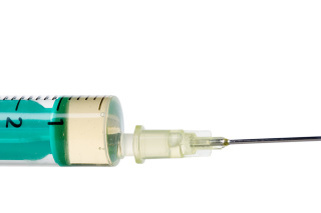
The world of autism research has been hopping lately with several new studies claiming to explain potential causes of autism and the apparent increasing incidence of this disorder. The media, including major publications, has jumped on board with the excitement about these findings.
One study outlines the potential of increased age in fathers to heighten the risk of autism in their children. The authors of this study explain that older dads pass on more small DNA mutations to their children than do younger dads, a difference which may explain some cases of autism. Considering that, in the population studied, the average paternal age has increased over time, it’s easy to see how the authors also conclude that increased paternal age may contribute to the increasing incidence of autism.
Other studies recently published, and then reviewed in The New York Times, implicate heightened maternal immune response in the development of autism in the womb. Infections such as the flu seem to bring about an exaggerated immune response in some pregnant women, leading to disruptions in the development of their children. Many studies have demonstrated a relationship between this prenatal immune system dysregulation and autism.
What’s missing in the media’s interpretations of these studies? In the midst of flashy results, the fact that autism is still largely unexplained gets pushed out of the picture. Although there seem to be breakthroughs on the horizon, the studies outlined above may only account for a fraction of the cases of autism. These findings and their implications are just pieces of the puzzle.
Science writer Virginia Hughes stated in a recent piece, “how many times do researchers have to say, ‘The cause of autism is really complicated’ before journalists and the public accept that the disorder can’t be explained by a gene, a brain scan, a father’s age, a gluten-rich diet or risk factor du jour?”
I share Hughes’s sentiments. We are dealing with what seems like a mega-10,000 piece puzzle, and we’ve yet to find all the pieces. When we’ve gathered as may as we can, then, and only then, will we be able to put them together and start to explain.
[This post was originally published at my previous blog, Neurolore.]
One study outlines the potential of increased age in fathers to heighten the risk of autism in their children. The authors of this study explain that older dads pass on more small DNA mutations to their children than do younger dads, a difference which may explain some cases of autism. Considering that, in the population studied, the average paternal age has increased over time, it’s easy to see how the authors also conclude that increased paternal age may contribute to the increasing incidence of autism.
Other studies recently published, and then reviewed in The New York Times, implicate heightened maternal immune response in the development of autism in the womb. Infections such as the flu seem to bring about an exaggerated immune response in some pregnant women, leading to disruptions in the development of their children. Many studies have demonstrated a relationship between this prenatal immune system dysregulation and autism.
What’s missing in the media’s interpretations of these studies? In the midst of flashy results, the fact that autism is still largely unexplained gets pushed out of the picture. Although there seem to be breakthroughs on the horizon, the studies outlined above may only account for a fraction of the cases of autism. These findings and their implications are just pieces of the puzzle.
Science writer Virginia Hughes stated in a recent piece, “how many times do researchers have to say, ‘The cause of autism is really complicated’ before journalists and the public accept that the disorder can’t be explained by a gene, a brain scan, a father’s age, a gluten-rich diet or risk factor du jour?”
I share Hughes’s sentiments. We are dealing with what seems like a mega-10,000 piece puzzle, and we’ve yet to find all the pieces. When we’ve gathered as may as we can, then, and only then, will we be able to put them together and start to explain.
[This post was originally published at my previous blog, Neurolore.]

